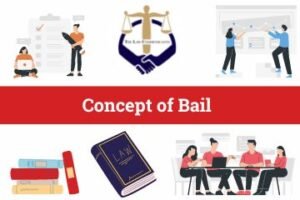Media and Law: The Landscape of Rights and Responsibilities
In the modern era, the intersection of media and law has become a complex and dynamic terrain, where issues of freedom, responsibility, and accountability converge. This relationship is multifaceted, involving the protection of free speech, the right to information, and the need to balance these rights with concerns like defamation, privacy, and national security. As media continues to evolve, so too do the legal frameworks that govern its practices, making it imperative to strike a delicate balance between fostering an open and informed society and preventing harm.
Table of Contents
- 1. Freedom of the Press:
- 2. Right to Information:
- 3. Defamation and Media Liability:
- 4. Privacy Concerns:
- 5. National Security and Media:
- 6. Intellectual Property Rights:
- 7. Social Media and Legal Challenges:
- 8. Media Regulation:
- 9. Shield Laws and Source Protection:
- 10. Media Ethics and Self-Regulation:
- 11. Challenges in the Digital Age:
- 12. Landmark Cases:
- 13. Future Trends:
- 14. Conclusion:
- Suggested Books
1. Freedom of the Press:
At the core of the relationship between media and law is the fundamental principle of freedom of the press. This right, enshrined in many constitutional and legal frameworks globally, is essential for the functioning of a democratic society. It allows media organizations to report on matters of public interest without undue interference.
2. Right to Information:
In parallel with freedom of the press is the right to information, which ensures that the public has access to information held by public authorities. This right is crucial for maintaining transparency, holding governments accountable, and empowering individuals to make informed decisions.
3. Defamation and Media Liability:
While the media plays a vital role in holding powerful entities accountable, it must also operate within legal boundaries. Defamation laws protect individuals from false and damaging statements, requiring media organizations to exercise due diligence in fact-checking and reporting.
4. Privacy Concerns:
Media outlets are often faced with the delicate task of balancing the public’s right to know against an individual’s right to privacy. Cases involving the publication of private information, especially related to public figures, prompt legal considerations that weigh the public interest against an individual’s right to privacy.
5. National Security and Media:
The relationship between national security and the media is intricate. Governments may impose restrictions on reporting during times of conflict or in matters of national security, raising concerns about censorship and the public’s right to be informed.
6. Intellectual Property Rights:
Media and law intersect in the realm of intellectual property, particularly concerning copyright issues. Media outlets must navigate the legal landscape to ensure that they are not infringing on the intellectual property rights of others.
7. Social Media and Legal Challenges:
The advent of social media has introduced new legal challenges. Issues such as online harassment, the spread of false information, and the responsibility of social media platforms in moderating content have become focal points of legal discussions.
8. Media Regulation:
Many countries have regulatory bodies overseeing media practices to ensure ethical standards, accuracy, and fair reporting. These bodies play a critical role in maintaining the integrity of the media landscape.
9. Shield Laws and Source Protection:
To encourage investigative journalism and protect sources, many jurisdictions have implemented shield laws that provide legal protections to journalists who may otherwise be compelled to reveal their sources in legal proceedings.
10. Media Ethics and Self-Regulation:
Beyond legal frameworks, media organizations often adhere to ethical guidelines and engage in self-regulation. This involves setting internal standards for accuracy, fairness, and responsible reporting.
11. Challenges in the Digital Age:
The digital age has brought about unprecedented challenges for media and law. Issues like deepfakes, misinformation, and the rapid dissemination of news on online platforms demand innovative legal responses.
12. Landmark Cases:
- New York Times Co. v. United States (1971): The Pentagon Papers case affirmed the importance of freedom of the press, allowing The New York Times and The Washington Post to publish classified documents related to the Vietnam War.
- Gertz v. Robert Welch, Inc. (1974): This case established the standard of “actual malice” in defamation cases involving public figures, ensuring that media organizations are held accountable for knowingly false statements.
13. Future Trends:
As media and technology continue to evolve, future legal trends may involve issues such as artificial intelligence in journalism, data protection laws, and the global regulation of online platforms.
14. Conclusion:
The intricate relationship between media and law reflects the delicate dance between the preservation of fundamental freedoms and the need for legal safeguards. As the media landscape undergoes rapid transformation, legal frameworks must adapt to ensure that the public’s right to information is balanced with the protection of individual rights and the maintenance of social harmony. In this dynamic environment, the dialogue between media and the law will undoubtedly shape the contours of democracy, accountability, and the public discourse for years to come.
Suggested Books
• Media Law with Right to Information Act by Dr. S.R. Myneni
• Media Laws In India: A Brief Observation by Akash Kamal Mishra
• Lectures on Media and The Law by Dr Rega Surya Rao
• Hand Book of Media Laws by Sheetal Thapar




